Image Archive
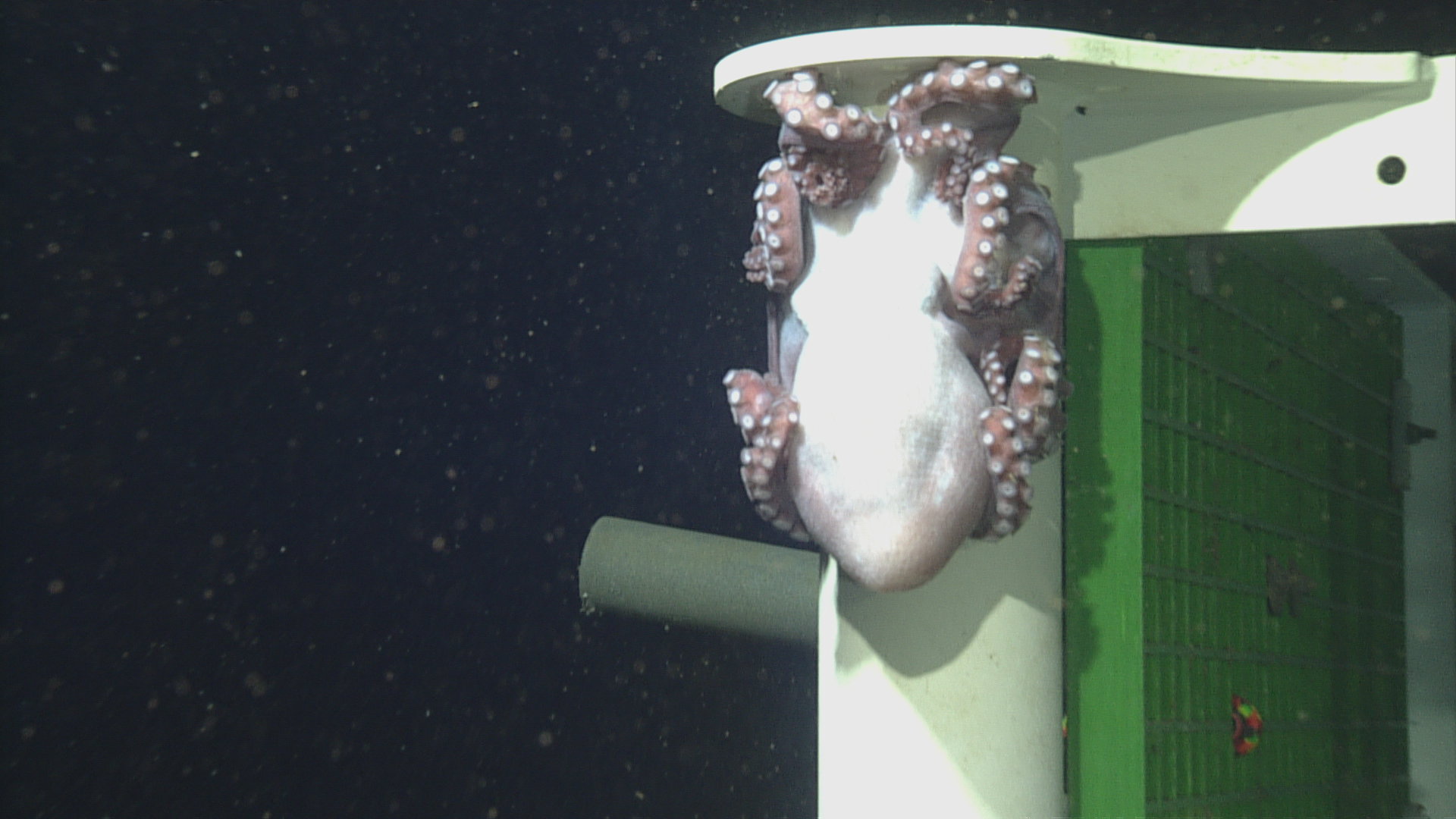







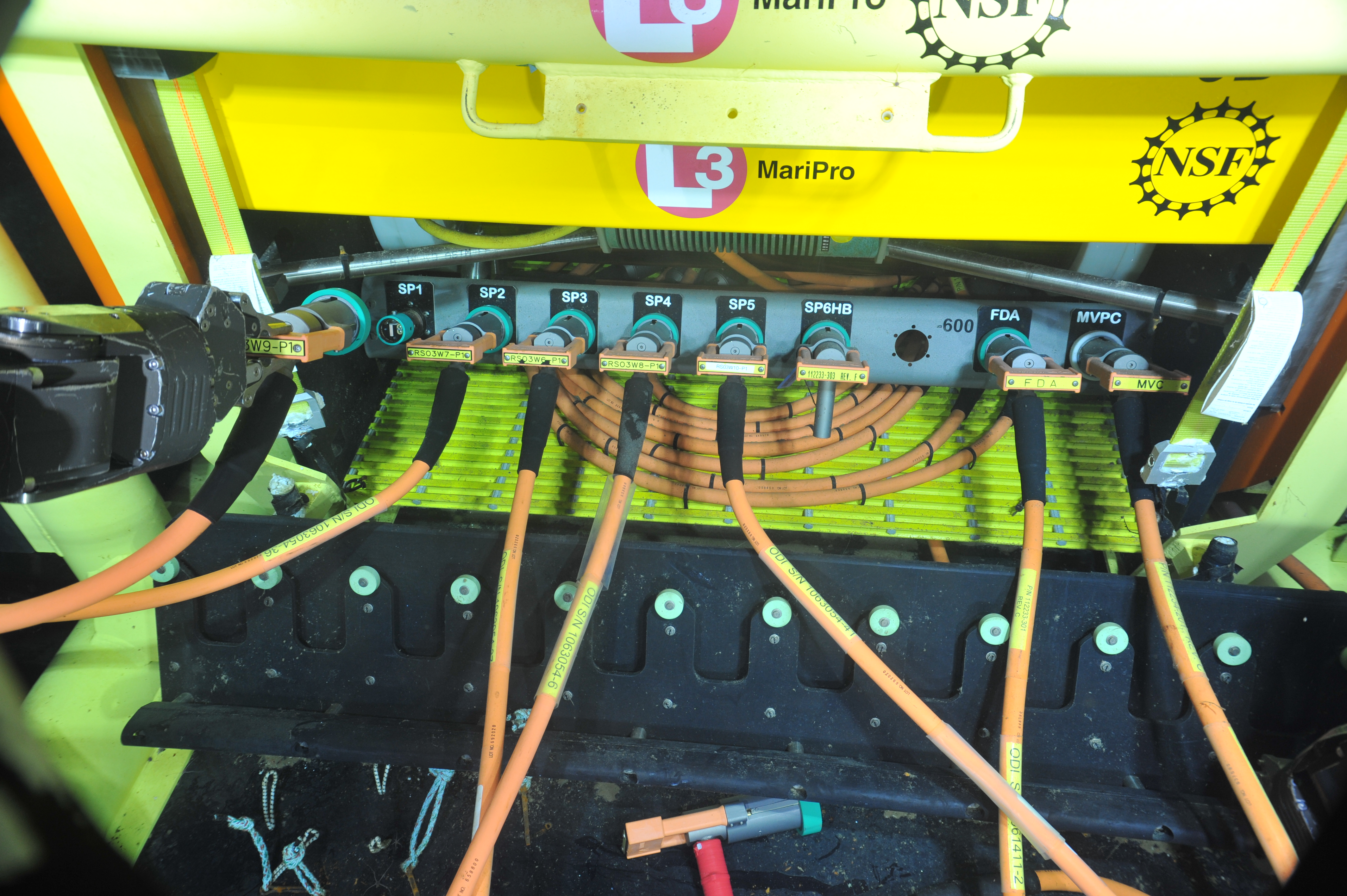

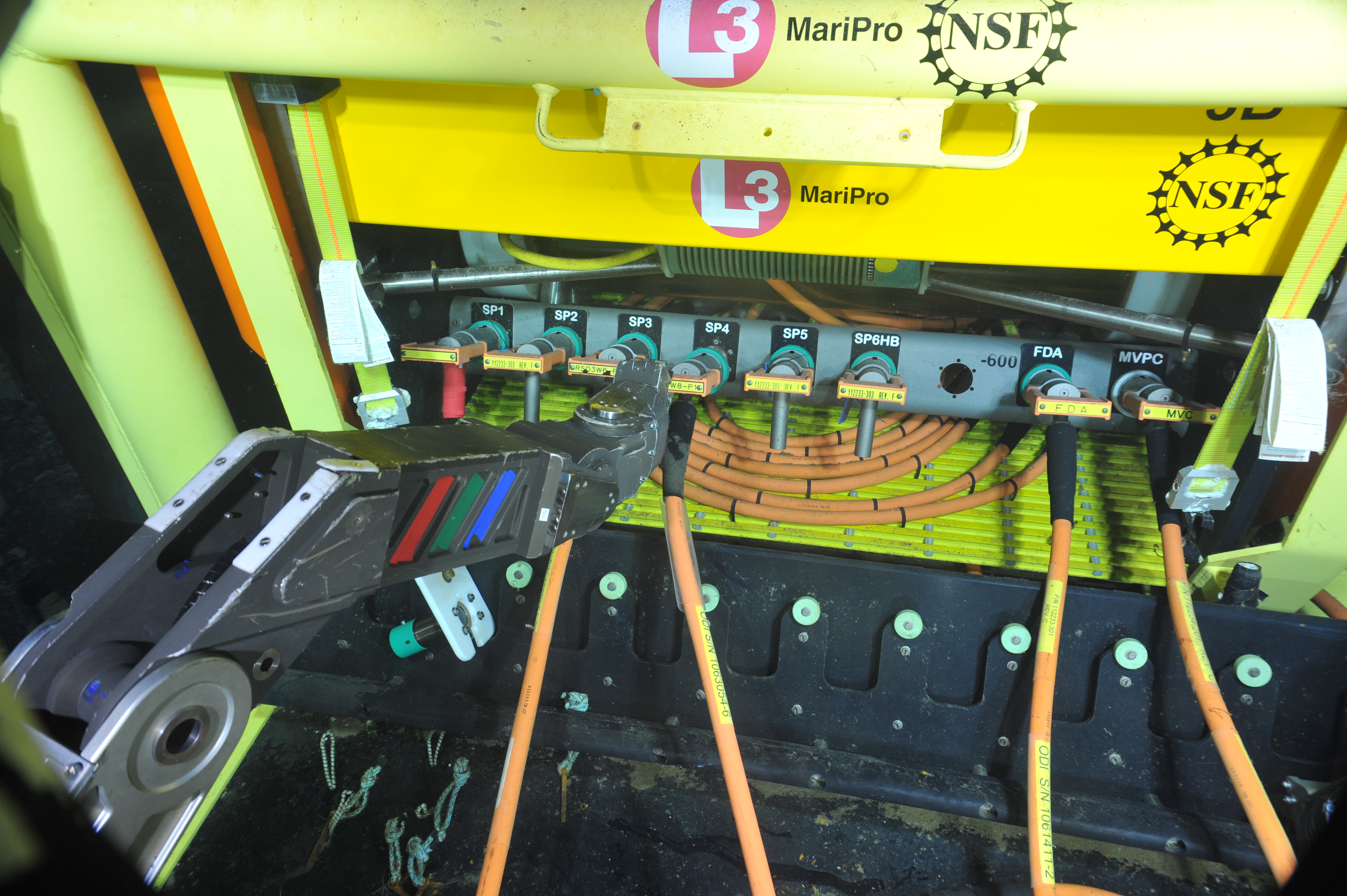
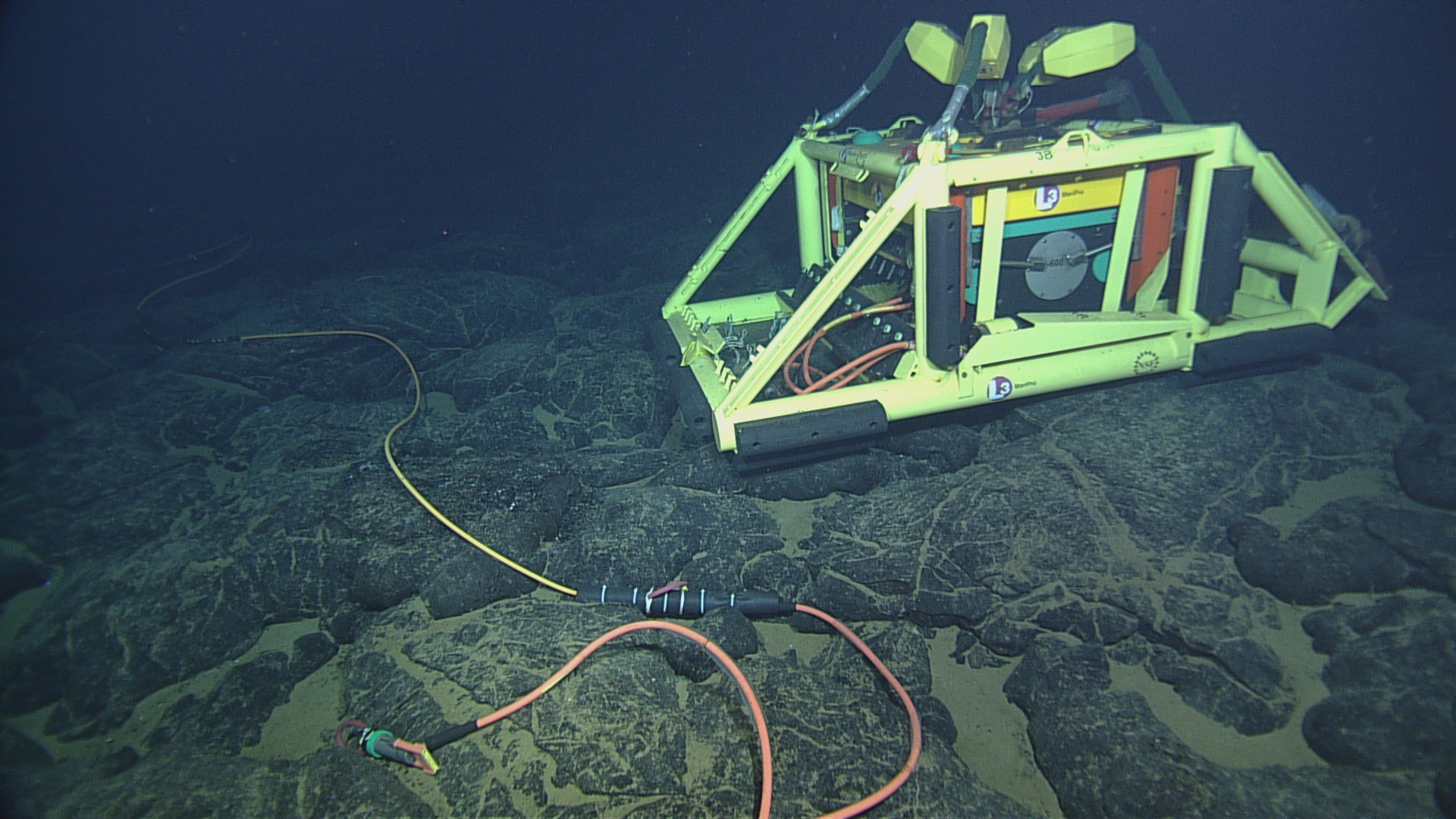
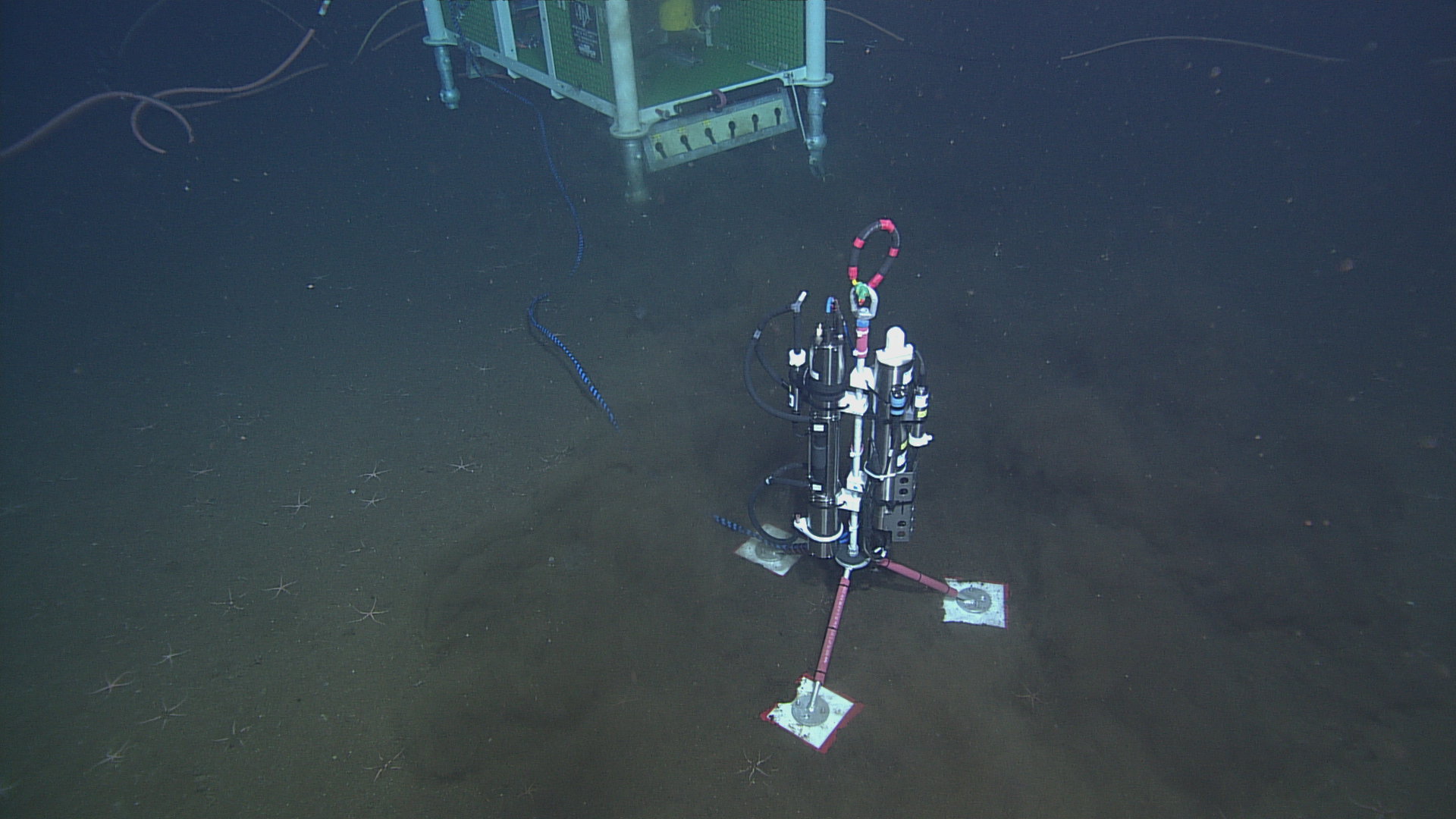


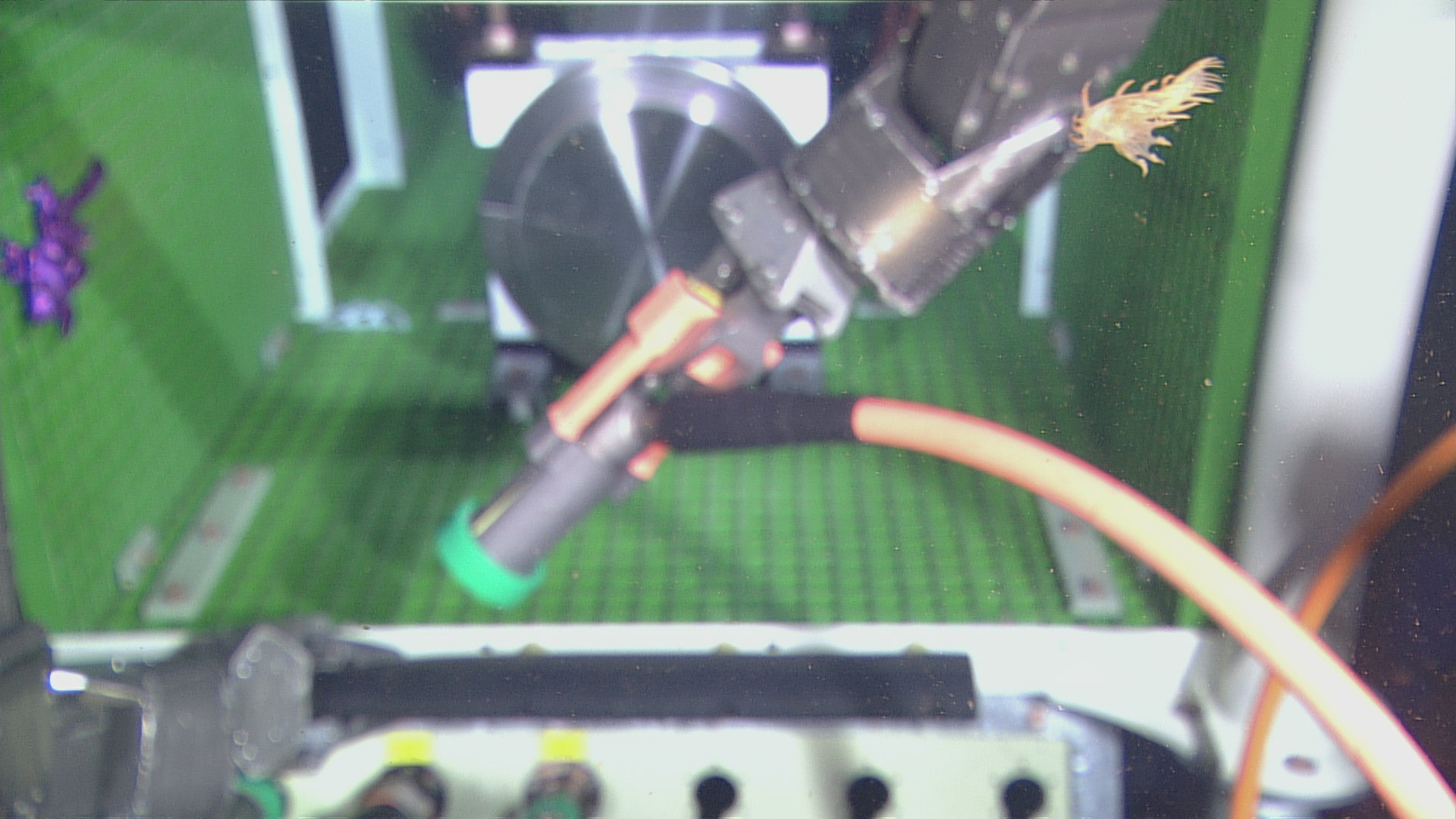







A deep-sea octopus (possibly a Muusoctopus), clinging to the leg of the medium power junction box MJ01A at Slope Base. It may be brooding eggs, and they can guard their eggs for over four years, longer than any known animal. Credit: UW/NSF-OOI/CSSF, ROPOS Dive R1751, V14.

Primary Node PN1C provides power and bandwidth to the Oregon Offshore site (600 m). Because it is in shallow waters, it hosts a 'trawl resistant' frame - here with the protective doors closed. Credit: UW/NSF-OOI/CSSF, ROPOS Dive 1747, V14.

The Benthic Experiment Package (BEP) deployed at the Offshore site (600 meters depth) and plugged into low-voltage node LV01C. Photo Credit: UW/NSF-OOI/CSSF, ROPOS Dive 1745, V14.

Seafloor cable RS01W9 and strain relief carabiners connected to the low-voltage node LV01C at the EOffshore site, 600 meters deep.Photo Credit: UW/NSF-OOI/CSSF, ROPOS Dive 1744, V14.

ROPOS connecting the P2 end of seafloor cable RS01W9 into the J1 port on LV01C. RS01W9 runs between PN1C and LV01C at the Endurance Offshore site, 600 meters deep. Photo Credit: NSF-OOI/UW/CSSF, Dive 1744, V14

Primary Node PN1C 1 km from the Oregon Offshore site ais home to numerous crabs. Credit: UW/NSF-OOI/CSSF, ROPOS Dive 1743, V14.

Primary node PN1C at Endurance Offshore was deployed in a trawl-resistant frame, including doors over the connection points. ROPOS cut through the straps and opened the doors in preparation for laying cable RS01W9 from PN1C to LV01C. Photo Credit: NSF-OOI/UW/CSSF, Dive R1743, V14

All Axial Base seafloor infrastructure is now connected to Primary Node PN3A. Photo Credit: NSF-OOI/UW/CSSF, Dive 1742, V14

On August 8, 2014 all Secondary Infratructure at the summit of Axial Seamount was connected to Primary Node PN3B. Here, cable RS03W9 is being plugged into the SP1 port on PN3B. Photo Credit: NSF-OOI/UW/CSSF, Dive 1741; V14.

Cable RS03W6 successfully plugged into SP3 on primary node PN3B at Axial Caldera. Photo Credit: NSF-OOI/UW/CSSF, Dive 1741, V14

ROPOS attempting to plug seafloor cable RS03W8 into SP4 on primary node PN3B at Axial Caldera. Photo Credit: NSF-OOI/UW/CSSF, Dive 1741, V14

Primary Node PN3B at Axial Caldera, along with cable RS03W9. Photo Credit: NSF-OOI/UW/CSSF, Dive 1741, V14

Tripod mounted CTD and optical attenuation sensors on the seafloor at the Axial Base site (2600m deep). Junction box LJ03A is visible in the background. Photo Credit: NSF-OOI/UW/CSSF, Dive 1739, V14

A large rattail swims beside LJ03A and LV03A at the Axial Base site (2600 meters deep). Photo Credit: NSF-OOI/UW/CSSF, Dive 1738, V14

The P1 end of extension cable AXVMW4 plugged into LV03A at Axial Base. Photo Credit: NSF-OOI/UW/CSSF, Dive 1737, V14

A swimming sea cucumber floating by ROPOS as it prepares to plug AXVMW4 into LV03A at Axial Base. Photo Credit: NSF-OOI/UW/CSSF, Dive 1737, V14

ROPOS removing the protective cap from the P1 end of extensions cable AXVMW4, prior to plugging it into low-voltage node LV03A at Axial Base. Photo Credit: NSF-OOI/UW/CSSF, Dive 1737, V14

Junction box LJ03A cabled to the low-voltage node LV03A at the Axial Base site. Photo Credit: NSF-OOI/UW/CSSF, Dive 1736, V14

An overhead shot showing the spatial relationship between junction box LJ01A and low-voltage node LV01A at the Slope Base site. Photo Credit: NSF-OOI/UW/CSSF; Dive 1735; V14.

Low Voltage node LV01A on the seafloor at Slope Base, as surveyed by ROPOS. Photo Credit: NSF-OOI/UW/CSSF; Dive 1734; V14.

On July 18, 2014 the Low-Voltage Node LV03A was deployed at Axial Base. It was moved on R1715 to its final location. It will provide power and communications to two moorings to be installed at this site. Primary Node PN3A is to the right. Photo credit: NSF-OOI/UW/CSSF; Dive R1714; V14.

The ROV ROPOS has an RSN-OOI , medium-powered junction box, MJ03C, secured to its underbelly for transport to the International District hydrothermal vent field. The junction box will provide power and communication to a diverse suite of chemical, temperature, and biological sensors, in addition to a digital still camera. Photo credit: NSF-OOI/UW/CSSF; Dive R1717; V14.
- Anemone
- Animal
- Arthropod
- ASHES
- Axial
- Axial Base
- Axial Biology
- Axial Caldera
- Bacteria
- Basalt Lava
- BEP
- Biofouling
- biolgoy
- Biology
- Camds
- Camera
- Camhd
- Central Caldera
- Ciliates
- Cnidaria
- Coastal Biology
- Crab
- Deep Profiler Mooring
- Dive Highlights
- Eastern Caldera
- Echinoderms
- Endurance Array
- Engineering Team
- ENLIGHTEN 10
- Exploratorium
- Fish
- Geology
- HD Camera
- HPIES
- Hydrate Ridge
- Hydrates
- Hydrophone
- Hydrothermal Vents
- Illustration
- Inshore 80 Meters
- Instrument
- International District
- J-BOX
- Jason
- Jellyfish
- Junction Box
- K12
- Lava
- Mollusk
- Moorings
- Nodes
- Nudibranch
- Octopus
- OOI
- Oregon Offshore
- Oregon Offshore 600 m
- Oregon Shelf
- Oregon Slope Base
- People
- PN1B
- PN1D
- Polychaetes
- PPSDN
- Primary Node
- RASFL
- ROCLS
- ROPOS
- ROPOS Dives
- ROV Team
- RV Revelle
- RV Sikuliaq
- RV Thompson
- Salp
- Sample
- SC13
- Science Team
- Sea Cucumber
- Sea Star
- Sea Urchin
- Seafloor
- Seismometer
- Sensors
- Shallow Profiler Mooring
- Shark
- Shipboard
- Shore Station
- Slope Base
- Smoker
- Soft Coral
- Southern Hydrate Ridge
- Sponge
- Squid
- Students
- Students & Guest Participants
- Tmpsf
- Tubeworms
- VISIONS 11 Leg 1
- VISIONS 11 Leg 2
- VISIONS 11 Viewers
- VISIONS 13
- VISIONS 14
- VISIONS 15
- VISIONS 16
- VISIONS 17
- VISIONS 18
- VISIONS 20
- VISIONS 22
- VISIONS 23
- Visualization
